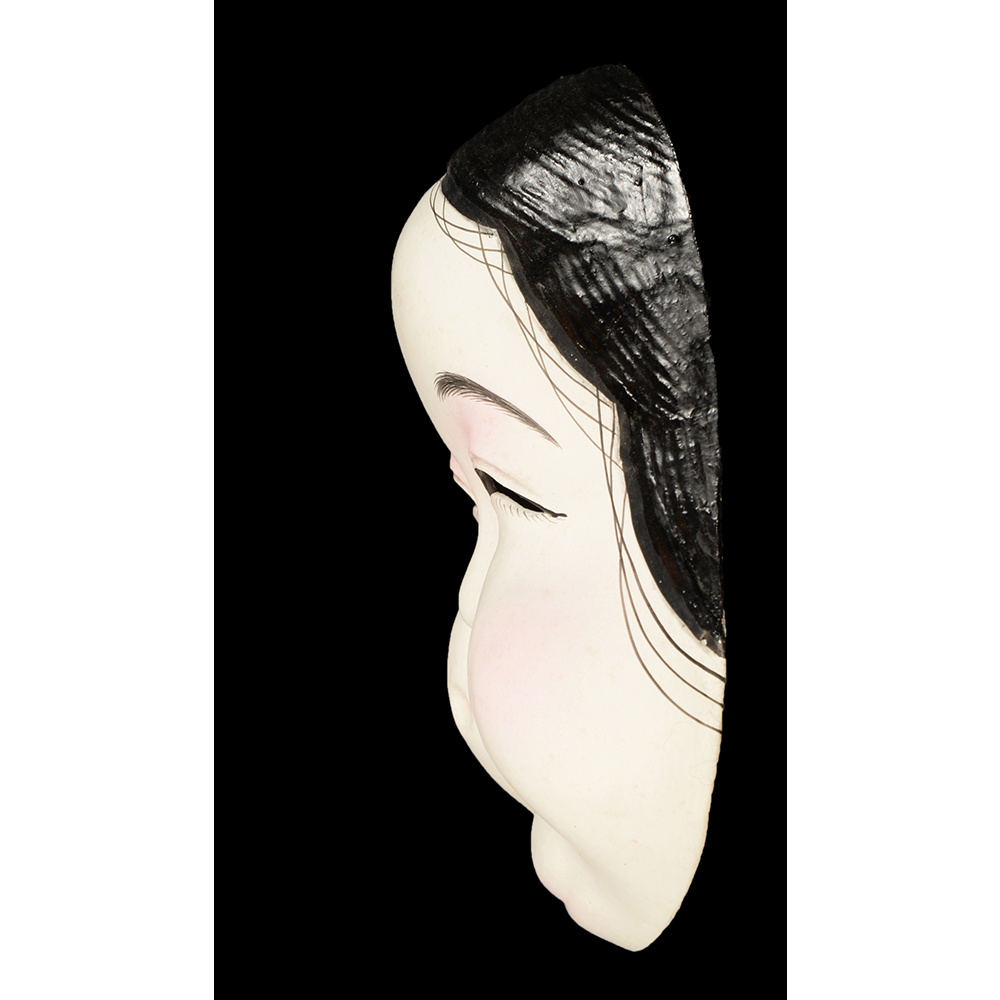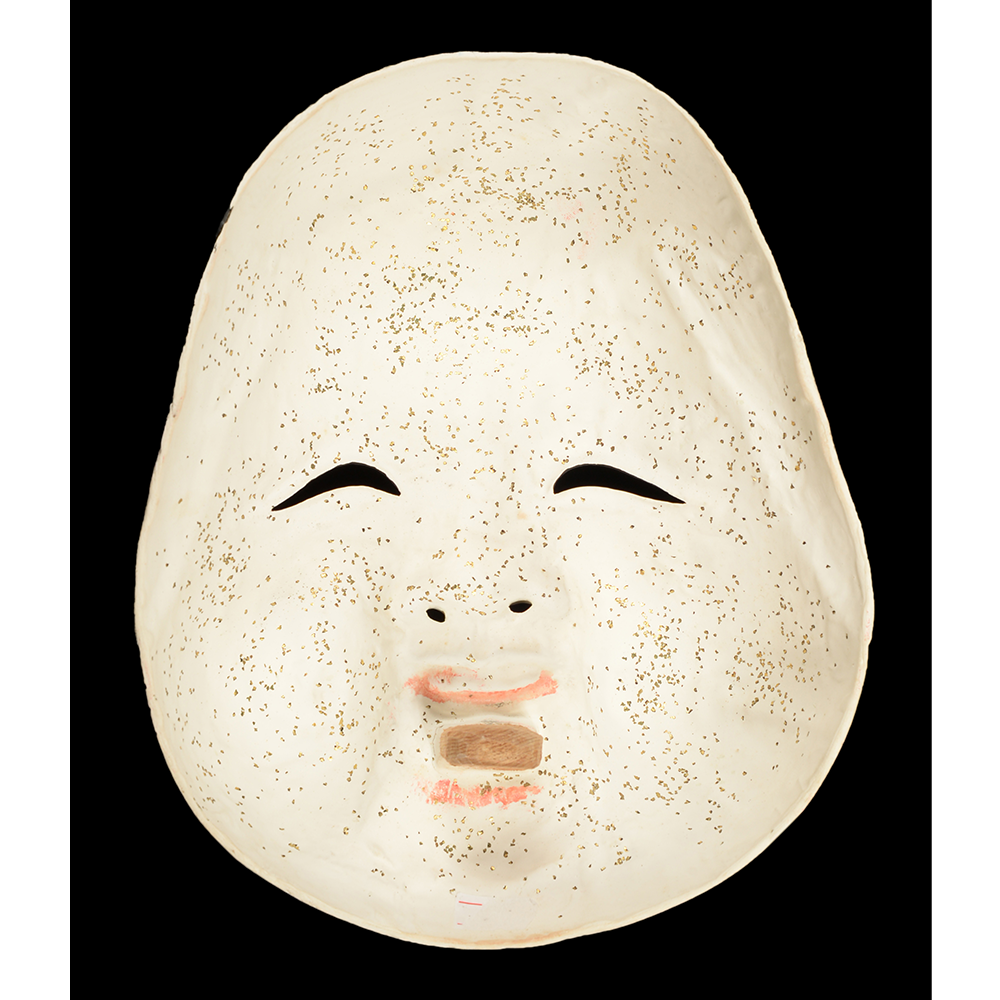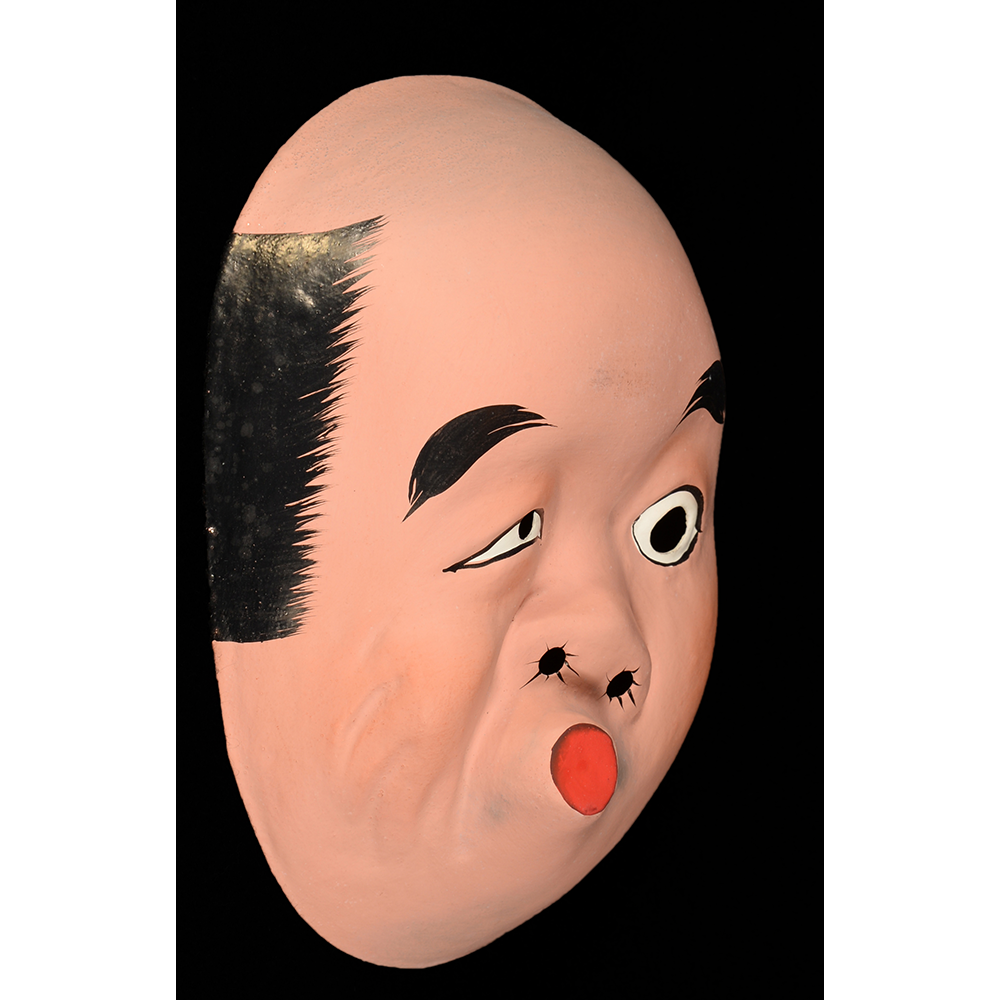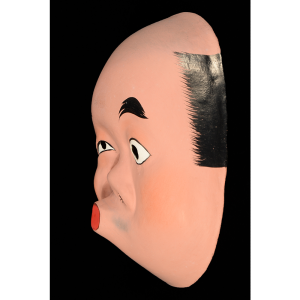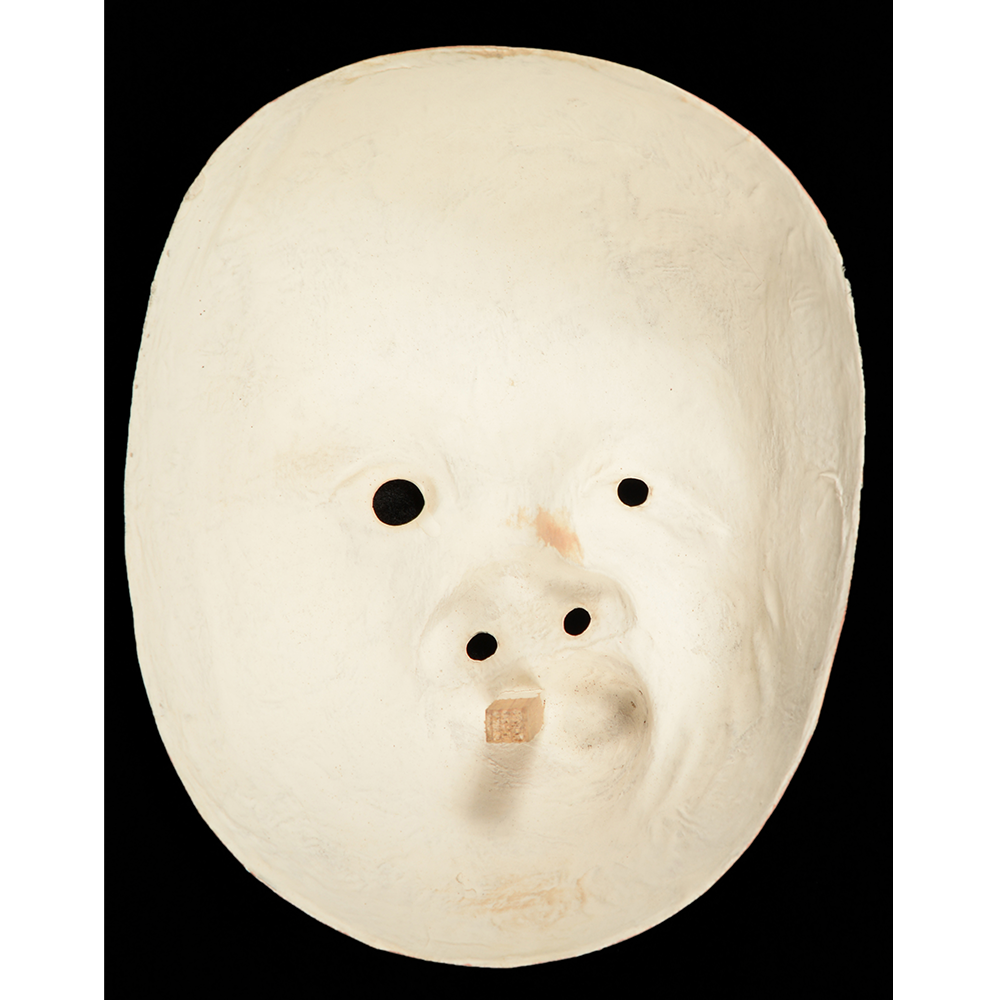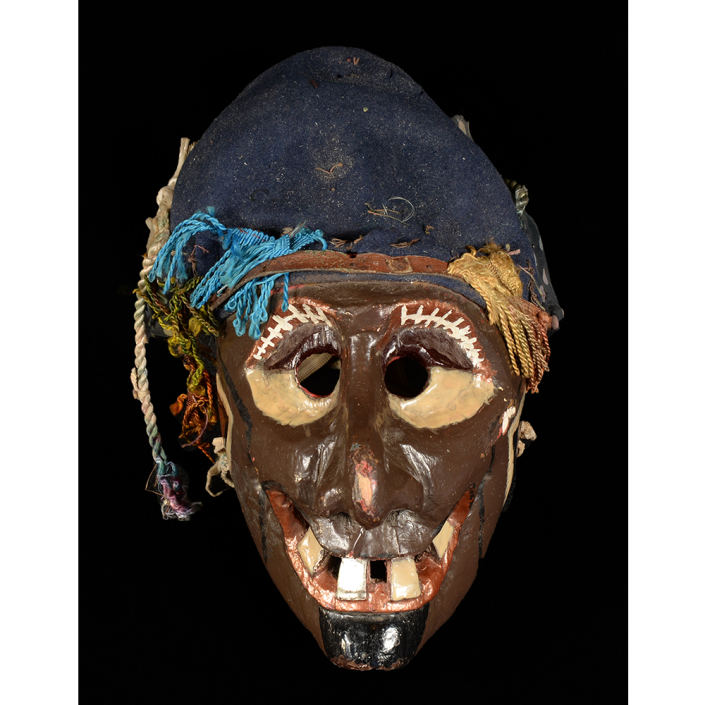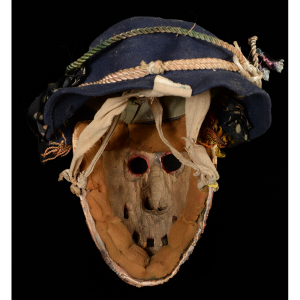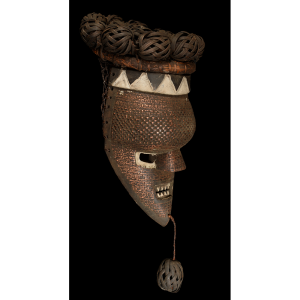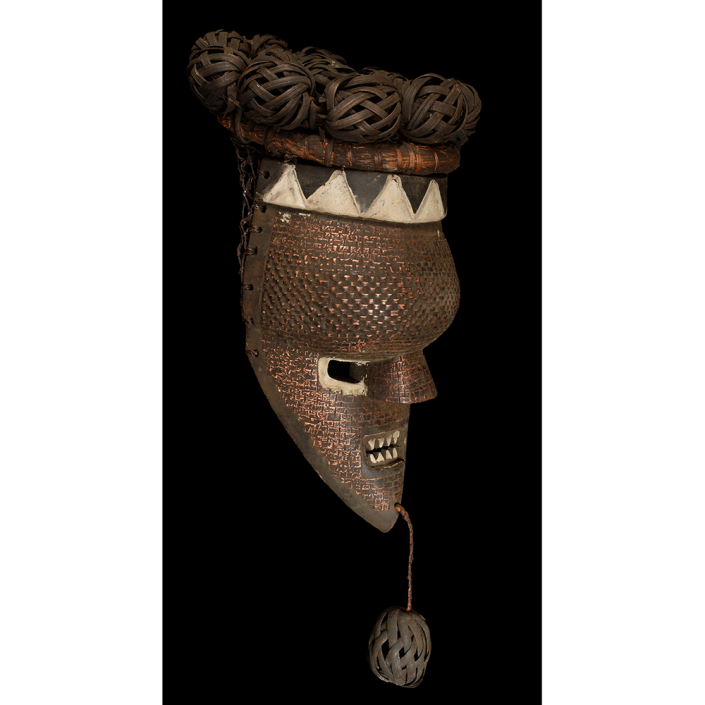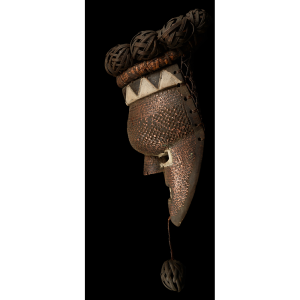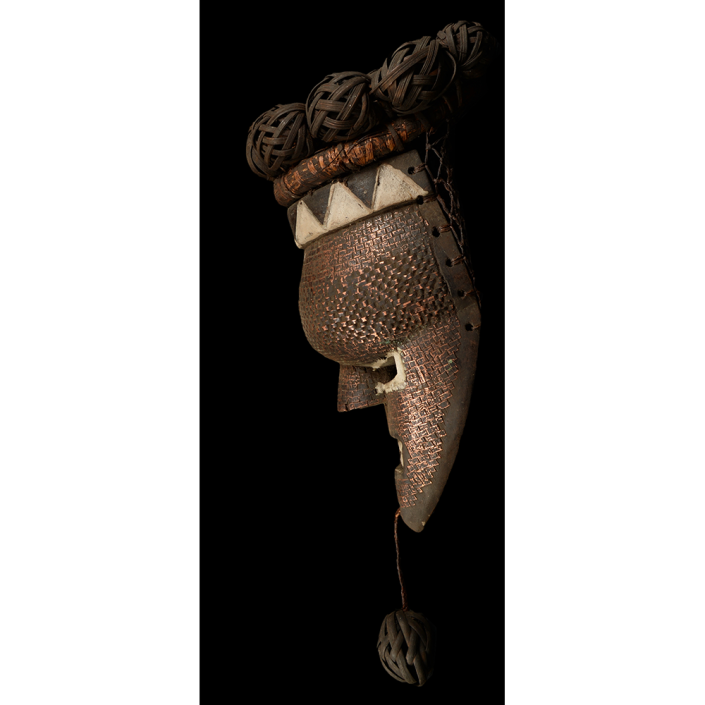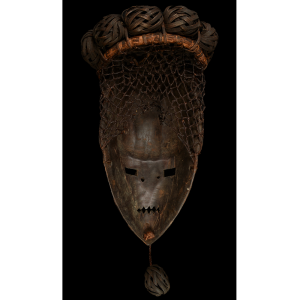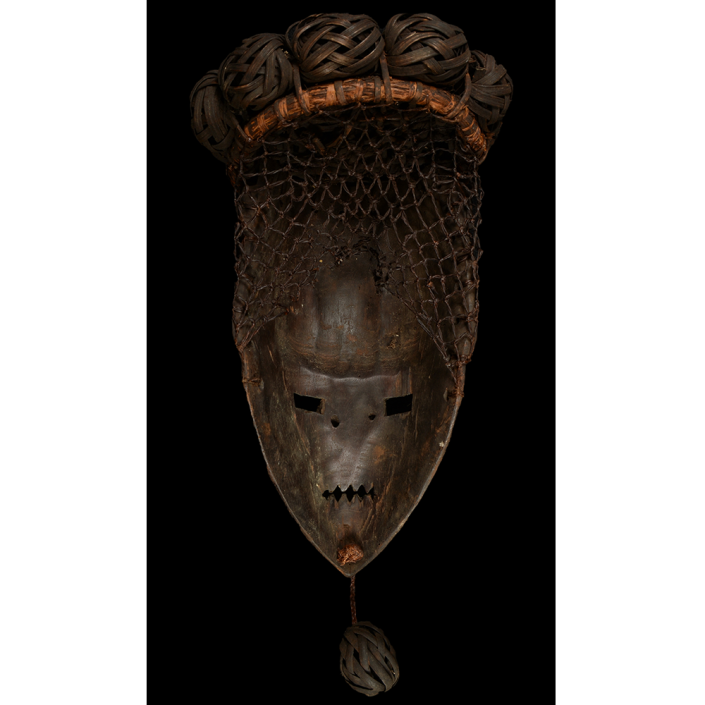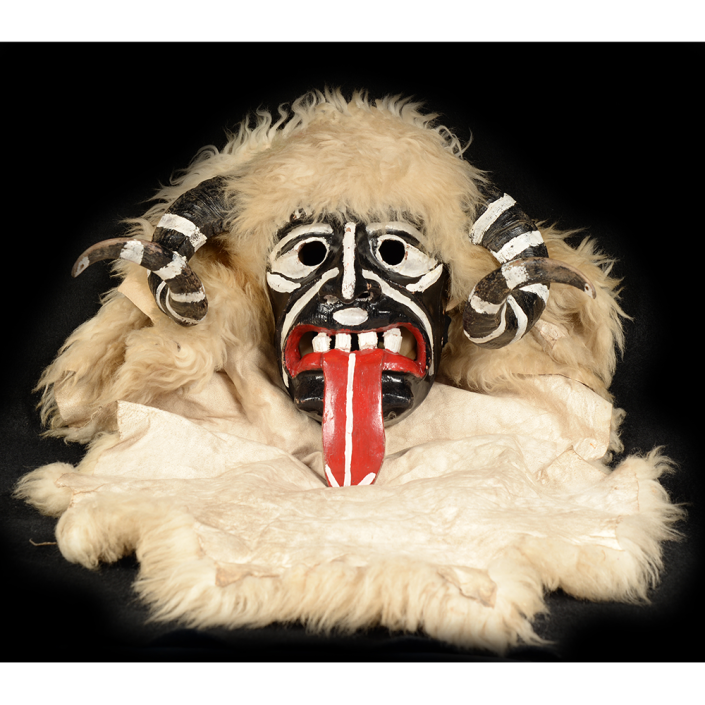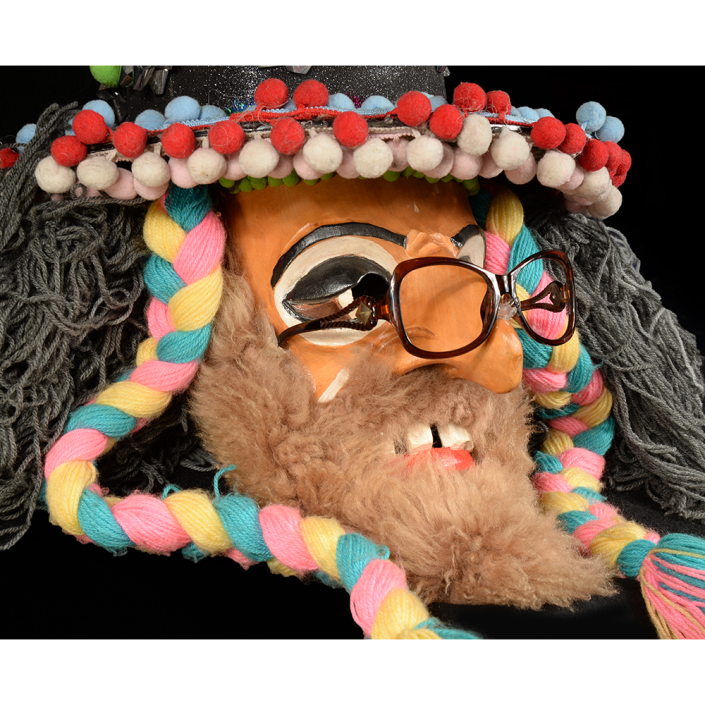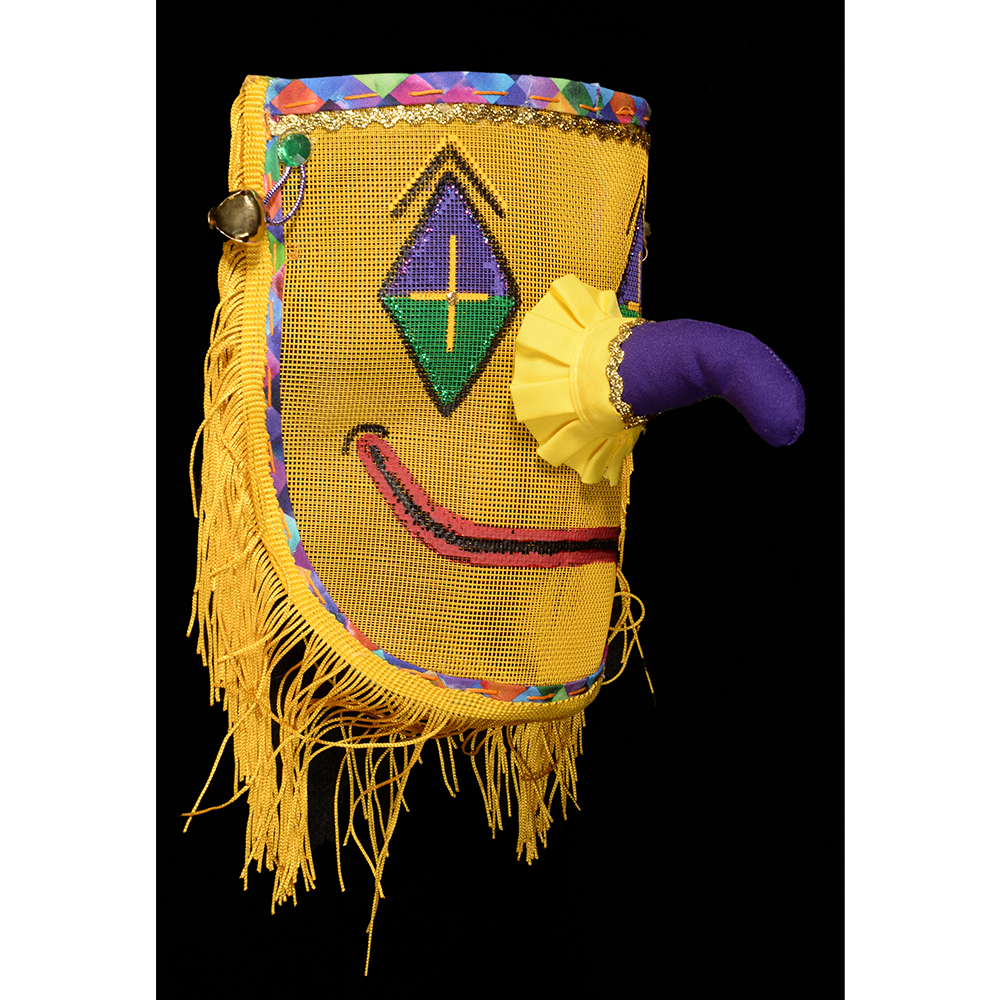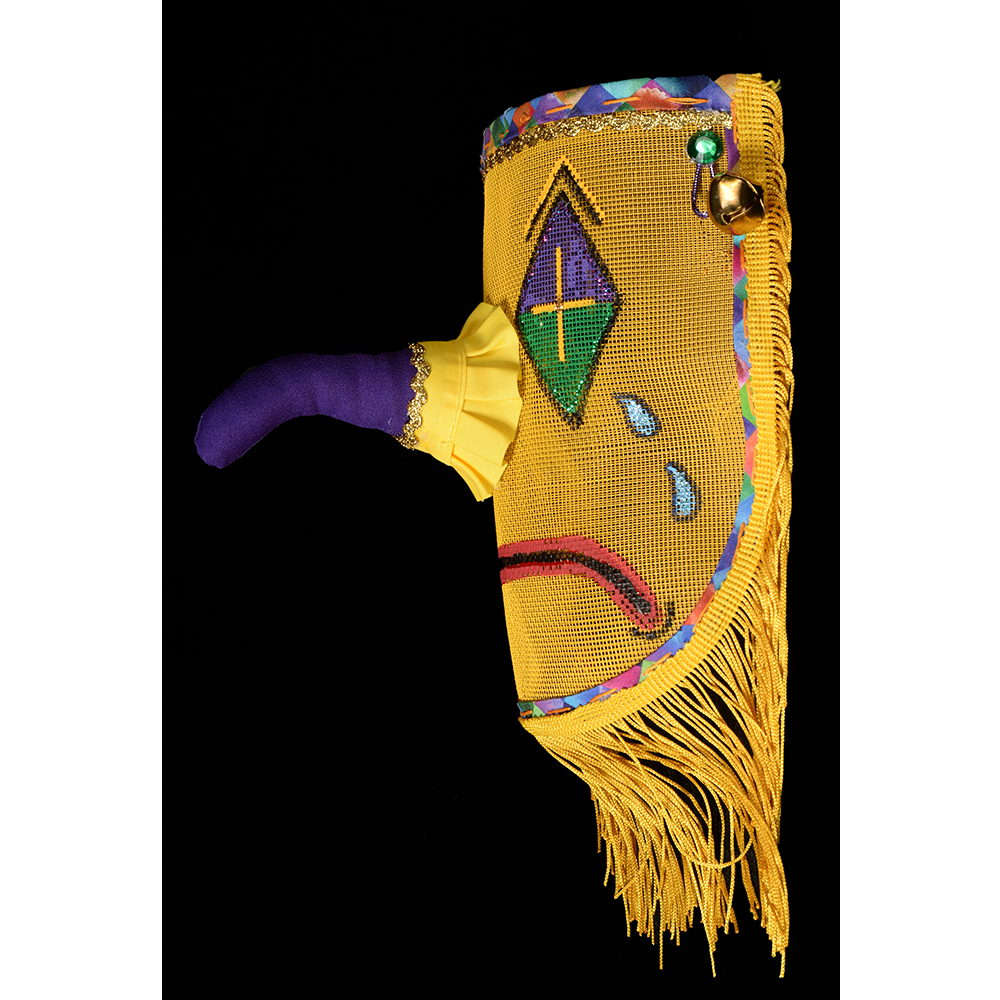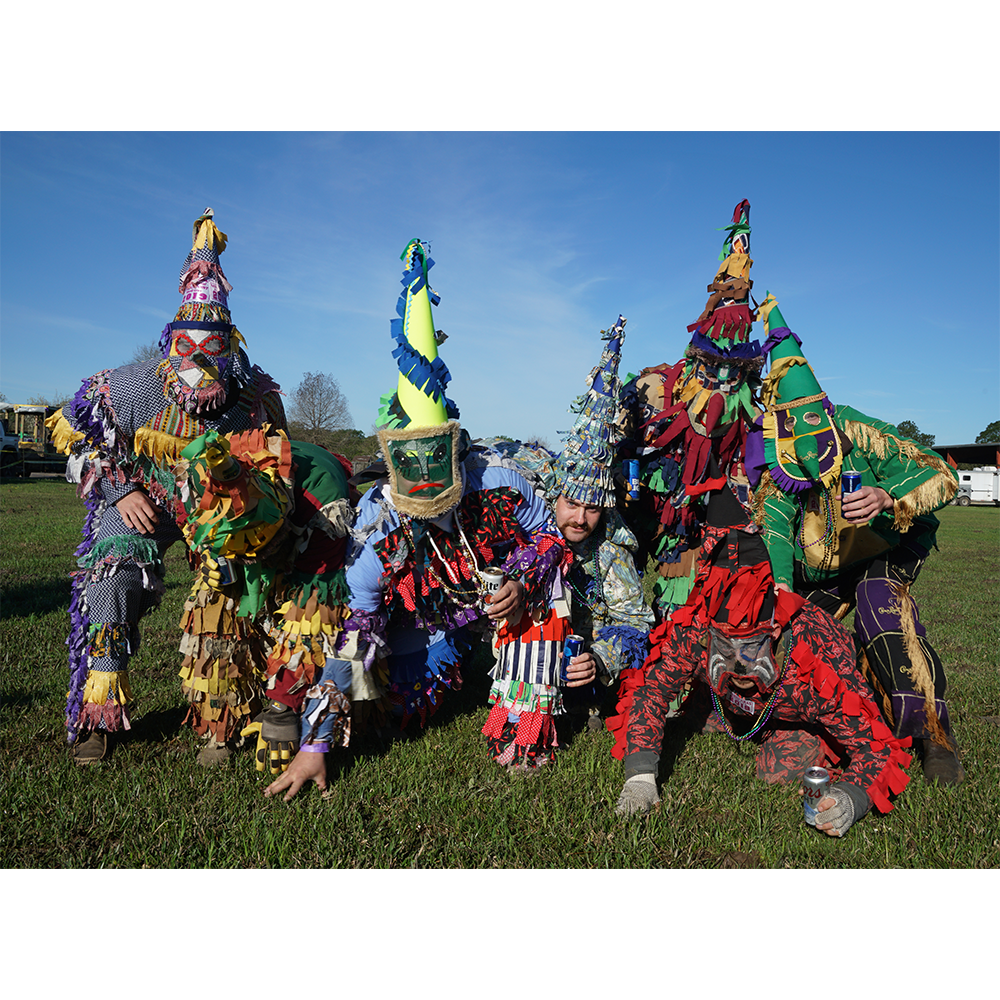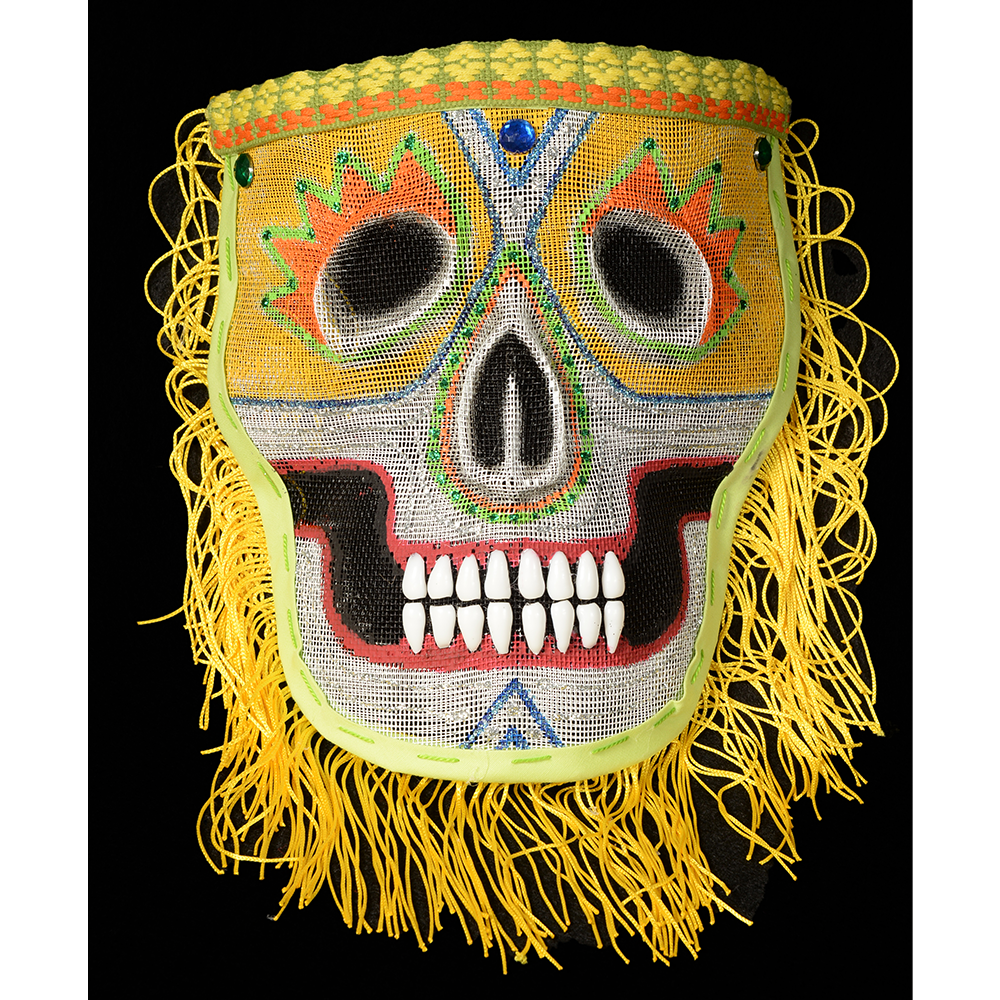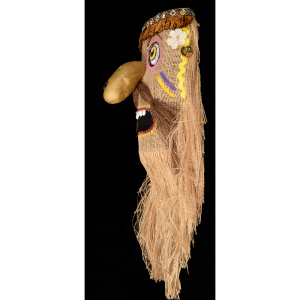TITLE: Nōgaku Kitsune Mask
TYPE: face mask
GENERAL REGION: Asia
COUNTRY: Japan
ETHNICITY: Japanese
DESCRIPTION: Kitsune (Fox) Mask
MAKER: Unknown (unsigned)
CATALOG ID: ASJP029
CEREMONY: Noh Drama; Kyōgen Play
AGE: ca. 1850
MAIN MATERIAL: Japanese cypress wood
OTHER MATERIALS: paint; animal hair; glue; silk cord
The Noh theater evolved from a combination of Chinese Nuo opera, popular village entertainment known as Sarugaku, and courtly Bugaku dance to become a uniquely Japanese form of high culture. Noh, or Nōgaku, probably first emerged as a distinct form of theater in the 14th century. A wide variety of plays developed over the ensuing three hundred or so years, with masked characters playing an important role in most. The masks require the actors to communicate through posture, body movement, and vocal control, whose perfection requires years of intense training. Although the masks prevent the actor from using facial expression, the most expertly carved masks can be made to express different emotions at different angles, so that he actor can change facial expression by the tilting his head.
This mask is known as kitsune, or fox. The fox represents a shapeshifting spirit animal (kami) that can take the form of any person and has supernatural powers. The kitsune is a character in the Noh drama Sessho-seki (“The Killing Stone”), which is the tale of Tamamo-no-Mae, a kitsune who assumed the form of a beautiful maiden to seduce Emperor Konoe and steal his throne.
The kitsune also appears prominently in Tsurigitsune (“Fox Trapping”), a kyōgen play in which the Buddhist priest Hakuzōsu visits his nephew, a hunter, to lecture him on the evils of killing foxes. After Hakuzōsu leaves the hunter, the kitsune encounters a trap and cannot resist the bait. He changes back to the form of a fox, and the suspicious hunter, watching from the bushes, traps him in the snare. Though he tries to bludgeon the fox, it ultimately escapes and cries out with relief.
Kitsune are often seen guarding Shinto shrines and are considered harbingers and wealth and worldly success. In Japanese mythology, there are thought to be thirteen different kinds of kitsune: celestial, wind, spirit, darkness, fire, earth, river, ocean, forest, mountain, thunder, sound, and time. Some kinds of zenko, or helpful, and others are nogitsune, or malevolent.
For more on Noh masks, see the excellent book by Michishige Udaka and Shuichi Yamagata, The Secrets of Noh Masks (Tokyo: Kodansha International , 2010).
To watch a short documentary about Japanese Nogaku (Noh drama and Kyogen plays), click above.



















